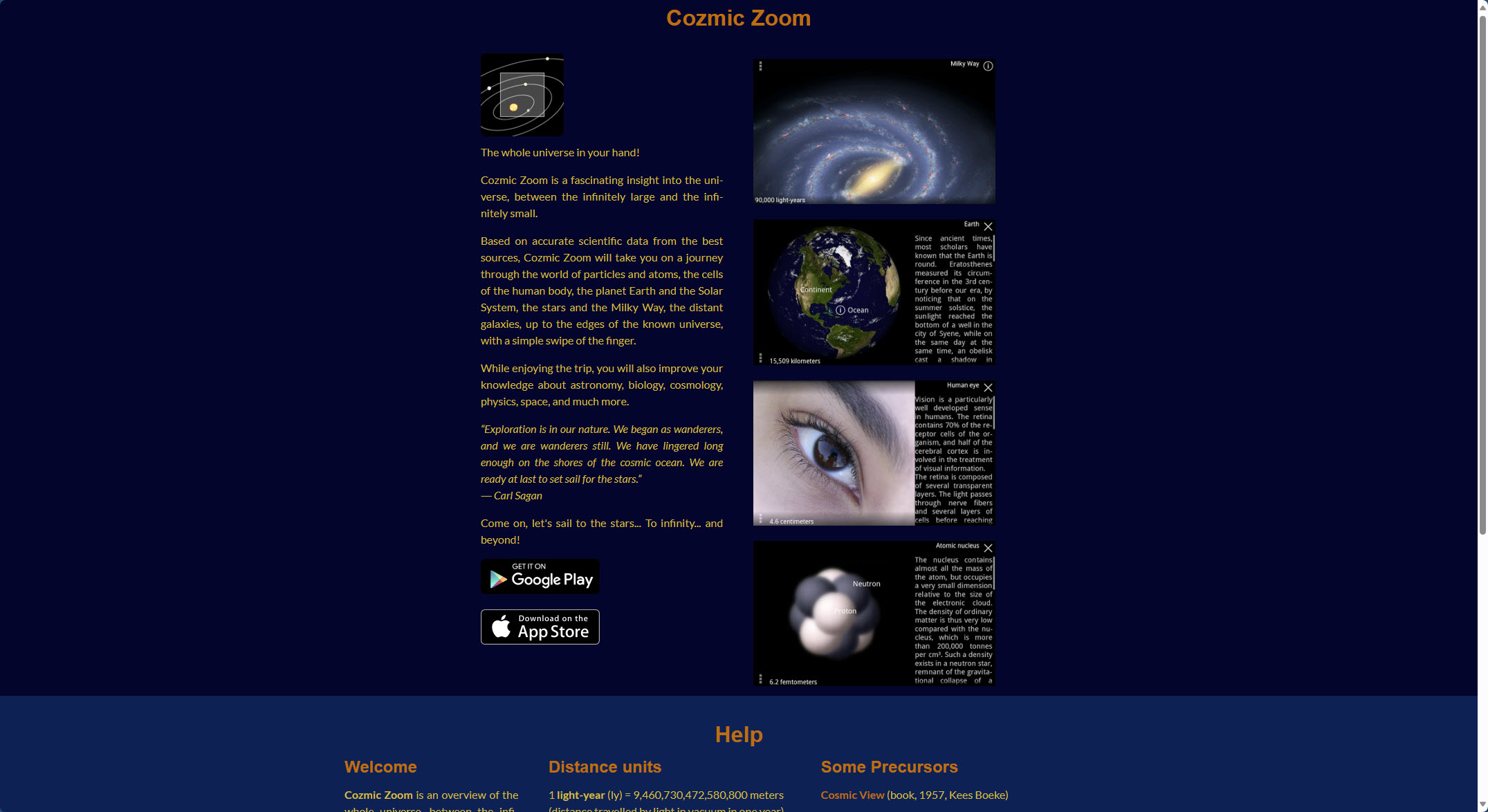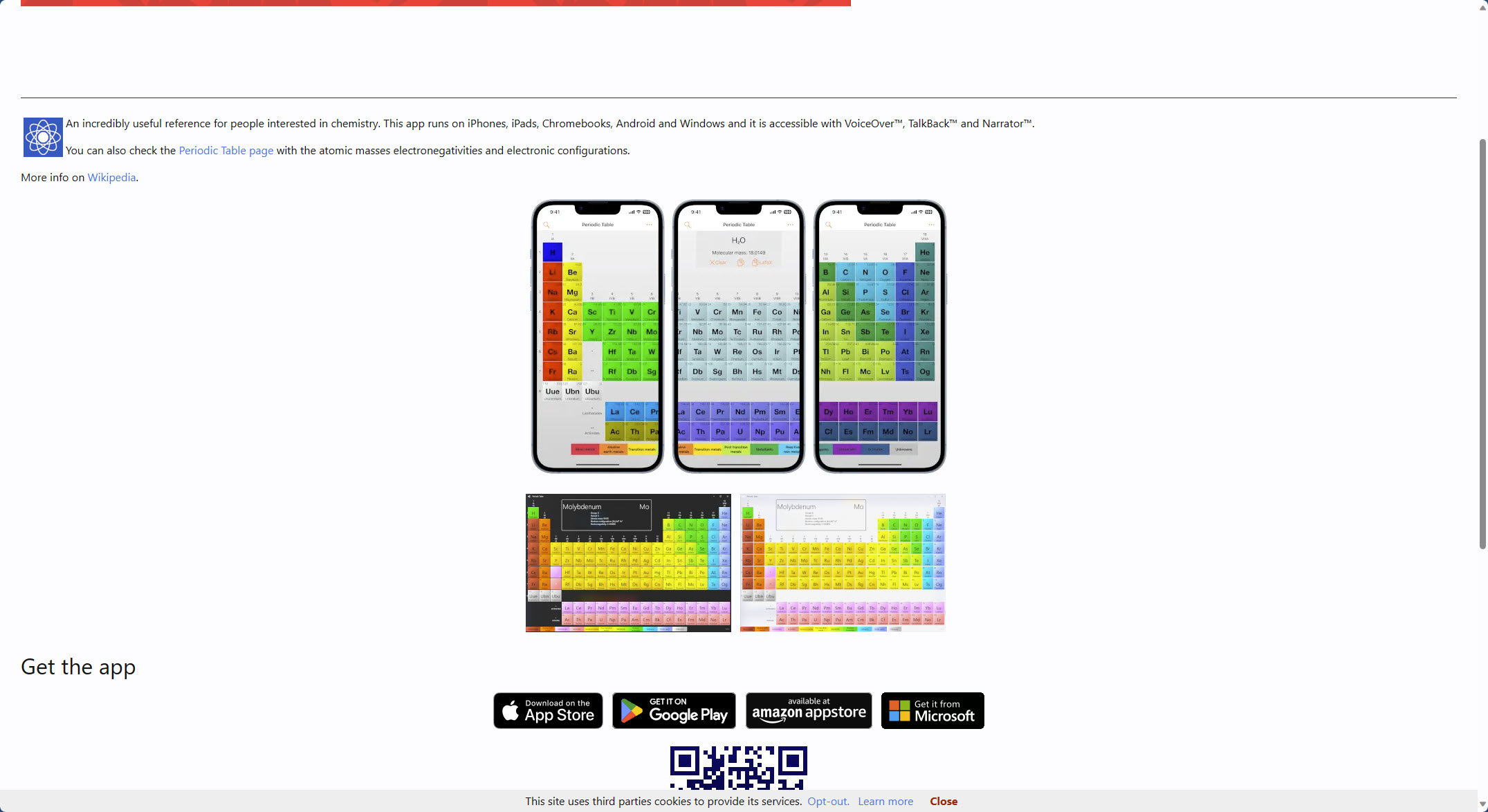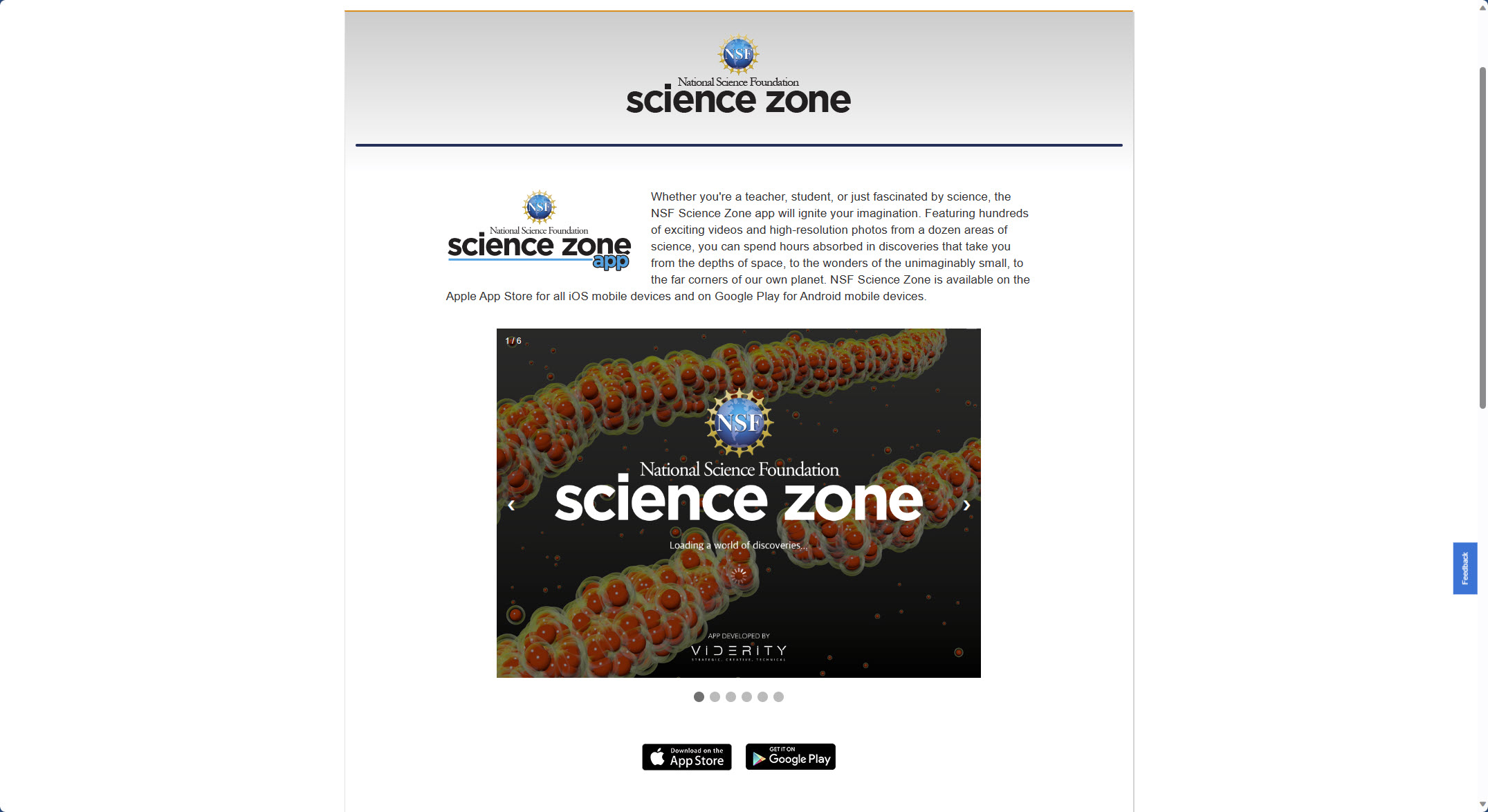Science
You would expect science and technology to go together like peanut butter and jelly. There are so many apps and web-based apps related to science that this list could go on for a long time. I've narrowed it down to a listing covering a variety of fields within science. Hopefully, you'll find this list useful.
 |
Cozmic Zoom will take you on a journey through the world of particles and atoms, the cells of the human body, the planet Earth and the Solar System, the stars and the Milky Way, the distant galaxies, up to the edges of the known universe, with a simple swipe of the finger. While enjoying the trip, you can also learn amazing facts and improve your knowledge of astronomy, biology, cosmology, physics, space, and more. |
 |
Earth Science Explorer - Discover fascinating information using the Interactive Earth Science Explorer. Select the topic you wish to explore and then hit the power button to whiz off views of the Earth that lead to even more interesting facts. When you arrive, a myriad of interesting facts await you. Tap a button to access interesting data about each topic, including the interior layers of the Earth, the structure and formation of volcanoes, and types of rocks, continents, and oceans- all presented in an interactive format. |
|
GoSkyWatch is easy to use. There are no buttons to press or modes to select; point to the sky to start exploring. Designed specially for efficient outdoor use. Touch-free identification — Information pops up on the screen as you move. Great for those cold nights with gloves on! Planets are shown with relative brightness to stars — No oversized graphics that prevent you from distinguishing a planet from surrounding stars. Popup images — No need to keep zooming in and out to see what is out there. Full 180-degree display — See at a glance what is in the sky and where without having to pan around. |
|
|
Human Body - Explore a working model of the body. Every part is animated and interactive: the heart beats, guts gurgle, lungs breathe, the skin feels, and eyes see. Designed for kids ages 4+ to discover what we’re made of and how we work. |
|
|
iCell gives students, teachers, and anyone interested in biology a 3D view inside a cell. Examples of three cell types are animal, plant, and bacteria. Learn about the various parts of the cell, which biologists, biochemists, and DNA researchers at the HudsonAlpha Institute study and use to advance the limits of biotechnology. |
|
|
iNaturalist - Explore! Learn! Record! iNaturalist helps you record your observations from the natural world and contribute them to iNaturalist.org, a naturalist social network. iNaturalist lets you track the plants and animals you've encountered. |
|
|
Leafsnap is the first in a series of electronic field guides developed by researchers from Columbia University, the University of Maryland, and the Smithsonian Institution. Leafsnap contains beautiful high-resolution images of leaves, flowers, fruit, petioles, seeds, and bark. Leafsnap currently includes the trees of the Northeast and will soon grow to include the trees of the entire continental United States. Leafsnap offers LeafSnap Premium unlocks unlimited smart plant identifications, full access to plant info, plant care reminders and guides. Ads are also removed for Premium members. You can access everything through the LeafSnap app. The Premium subscription includes: 1. Identify plants without limits 2. No ads 3. Step-by-step plant care guides 4. Plant care reminder without limits 5. Advanced Identification 6. Access to a database of over 30,000+ species.
|
|
Marco Polo Ocean has five build-and-play activities that bring the language and the images of the ocean to life. Ocean is playfully narrated and animated to reinforce vocabulary, physical attributes, and ocean concepts.
|
|
|
Marco Polo Weather allows you to explore the fascinating world of weather! Create rainbows, thunderstorms, blizzards, and more as you learn about nine major weather types. Weather controls allow you to change atmospheric conditions such as temperature, wind speed, precipitation, cloud coverage, etc. Every choice and combination creates a new weather experience! |
|
 |
Molecules is an application for viewing three-dimensional renderings of molecules and manipulating them using your fingers. You can rotate the molecules by moving your finger across the display, zoom in or out by using two-finger pinch gestures, or pan the molecule by moving two fingers across the screen at once. These structures can be viewed in both ball-and-stick and space-filling visualization modes. |
 |
Periodic Table of Elements + - A quick Mendeleïev's table using a little space. Accessible with VoiceOver, it is a useful reference for students and people interested in chemistry. It reports many data related to chemical elements that you can select and copy. With this app, you can create the molecular formula by long-pressing the symbols and computing its mass. The app also includes links to the Wikipedia pages of the elements for extensive information. |
|
Planets is a 3D guide to the solar system. Sky 2D: locate planets with a flat view of the sky. Sky 3D: planetarium-style view of the sky. Visibility: shows times when planets are visible. Globe: rotating 3D globe of planets and moon. |
|
|
Project Budburst - Mobile BudBurst is a great tool for entering your observations of plants from anywhere you happen to be. Think of Mobile BudBurst as your digital datasheet for reporting observations. Mobile BudBurst uses your device's built-in GPS function to automatically capture the latitude and longitude coordinates when describing your site location, eliminating the need to look it up or bring a GPS. If you aren't standing right next to your plant, you can still use Mobile BudBurst to identify your plant's location when you make your report. |
|
| Project Noah is the best way to share your wildlife encounters and help document our planet's biodiversity. Project Noah is introducing Nature School, a creative and dynamic new nature learning platform from Project Noah! Nature School's curriculum includes visual nature lesson infographics; species spotlight class videos, interactive conservation challenges, a nature calendar and more! | |
 |
NSF Science Zone - Whether you're a teacher, student, or just fascinated by science, the NSF Science Zone app will ignite your imagination. Featuring hundreds of exciting videos and high-resolution photos from a dozen areas of science, you can spend hours absorbed in discoveries that take you from the depths of space to the wonders of the unimaginably small to the far corners of our own planet. |
|
Virtual Frog Dissection is suitable for middle-school students learning about organs and organ systems as part of their life science curriculum. Students can try dissecting a virtual specimen with all the trappings that come with the real procedure, the mess, of course! Besides a virtual chloroformed specimen, the app has all the dissection tools and detailed instructions to complete the procedure. Once dissection is complete, the frog’s organs are exposed for further study. |
|
|
ZooKazam is an educational AR App that allows you to learn about animals and witness a giraffe popping out of a flat piece of paper in a photo-realistic 3D animation. ZooKazam uses the most advanced algorithms to provide users with incredibly real content. There are 16 new animals and a visually detailed info-graphics page about each animal. |






